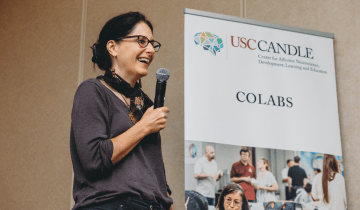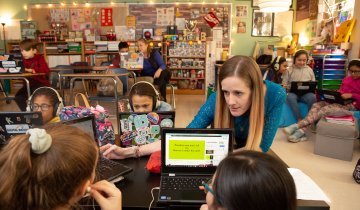The true goal of any technology is to become so innovative that it quickly becomes boring and commonplace—so much so that it recedes into the background, unnoticeable in the milieu of a given environment.
If you were to take some time to think about it, you could easily come up with examples of such technologies. The car you drive, the shoes on your feet, the phone in your pocket. I do not marvel at my Honda Civic when I drive it each morning. Instead, it becomes an unnoticeable extension of myself and serves to support my journey from point A to point B. Ditto for my shoes. Even my smart phone has lost much of its luster, despite being more powerful than the desktop computer I had growing up. Each of the aforementioned technologies were innovative at some point in time. Yet, each of them is quite ordinary now, despite being useful.
What makes a technology feel new versus commonplace? We can understand this distinction by invoking some Heideggerian philosophy: effective technologies transition to being “ready-to-hand” after a period of being “present-at-hand.” The former are the shoes on your feet—effortlessly useful, while the latter are conspicuous and thus not easily embeddable into your everyday practice (the very first iPhone, for example).
Learning technologies are no different. Chalkboards, desks, and any number of writing instruments are all examples of learning technologies, albeit ones that are no longer at the cutting edge.
Despite being boring, they are each examples of transformative technology. Chalkboards enabled mass communication in small spaces that persisted long after being written. Desks provided means for students to have a stable, personal writing surface that enabled ongoing engagement with both lectures and chalkboards. Personal writing instruments led to personal expression and engagement while also extending our memories. As with common household items, the contemporary use of each of these learning technologies is uneventful. They are ready-to-hand unless they “fail,” as would be the case with a dried-out marker or broken pencil.
At its core, the notion of personalized learning reflects a very human tendency: the desire to acknowledge and celebrate all students as unique. Learning analytics—or the capability to use new data sources to produce, analyze and create actionable intelligence for individual students at scale—provides a pathway to accomplish this. Learning analytics represents a new constellation of technologies and approaches that have yet to find stable footing in common pedagogical practice. Learning analytics, then, is currently “present-at-hand.”
To innovate is to work toward the boring—to build technologies that are so transformative that they are quickly adopted and embedded into practice. The task for the current generation of cutting-edge, learning analytics researchers (myself included) is to design, develop, test, implement and scale new technologies that are destined to become commonplace. This is no easy task, yet it is one that I am excited to pursue.





